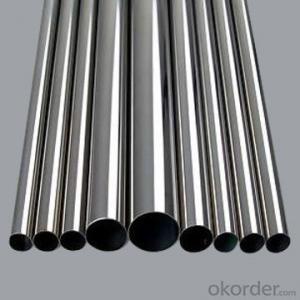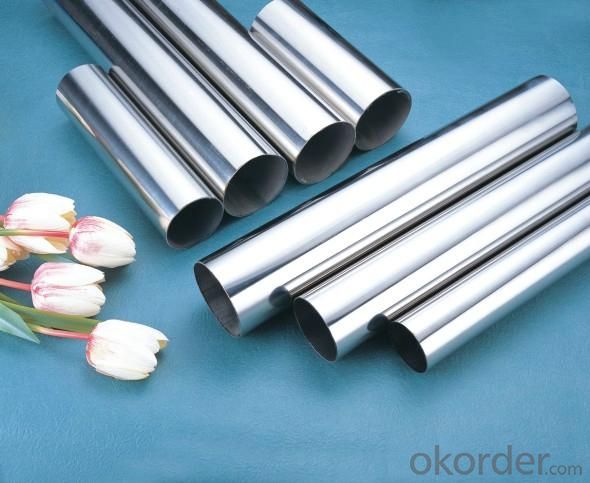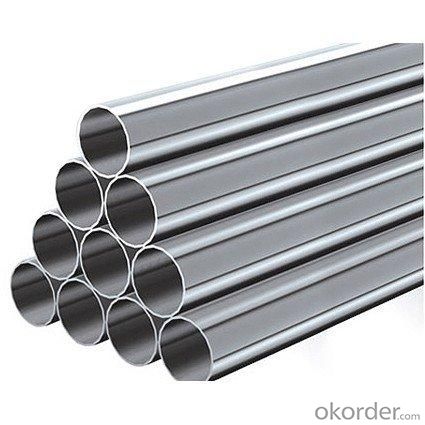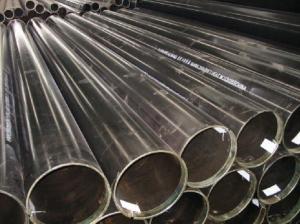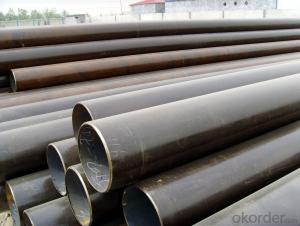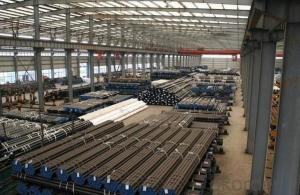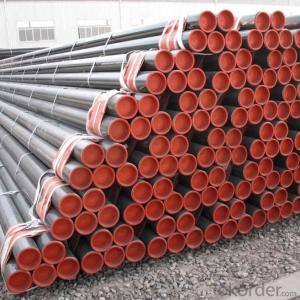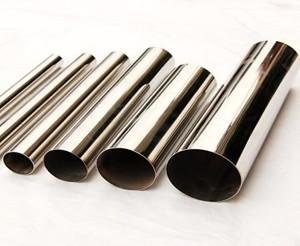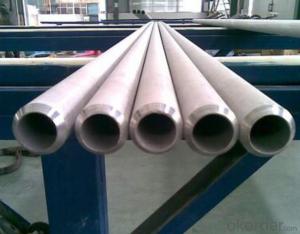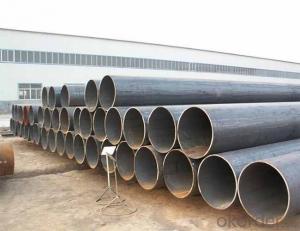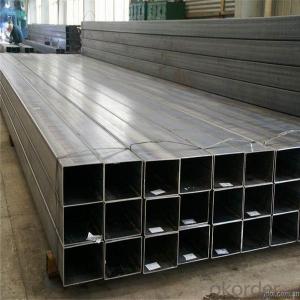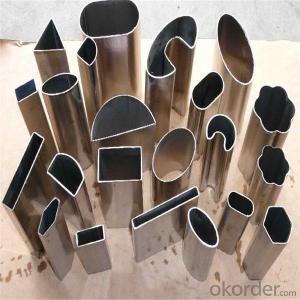High Luster,Elegance,Rigidity And Durability Stainless Steel Welded Tube
- Loading Port:
- Tianjin
- Payment Terms:
- TT OR LC
- Min Order Qty:
- 50 m.t.
- Supply Capability:
- 5000 m.t./month
OKorder Service Pledge
OKorder Financial Service
You Might Also Like
Quick Details
Standard: JIS, AISI, ASTM, GB, DIN, EN
- Model Number: SUS 201 304 316 430
Type: Welded
Steel Grade: 300 Series, TP304
Application: Decorations, constructions,Heat Interchangers and heaters,etc.
Certification: BV
Welding Line Type: ERW
Thickness: 0.25--5.0mm
Outer Diameter: 10*10mm----100*100mm
Length: 6M,or as per requirement
Finishing: Sanded,400 gloss,600--1000 mirror, brushed,etc.
Specification: 30*30*1.5
Packaging & Delivery
| Packaging Details: | Each pipe has the plastic bag to packed it ,and several will be bundled by weaving bag. |
|---|---|
| Delivery Detail: | 25-30 days, depends on customers' order quantity |
High Luster,Elegance,Rigidity And Durability Stainless Steel Welded Tube
Hot selling 304 stainless steel welded square pipe with favorable price
| Specification | |
| Material | 304:0cr18ni9, 0cr17ni8 |
| 201:1cr17mn6ni5n,1cr13mn9ni1n | |
| 316:0cr17Ni12 | |
| or as customer's request | |
| Standard | ASTM A554, Q/GBS1-2005, customers' requests available |
| Size | 10*10mm,12*12mm,18*18mm,23*23mm,38*38mm,50*50mm, |
| 70*70mm,100*100mm,20*10mm,23*11mm,24*12mm, | |
| 25*13mm,36*23mm,40*20mm,50*20mm,60*15mm,75*45mm, | |
| 80*60mm,95*45mm,100*60mm,120*60mm,150*100mm, | |
| (or customized) | |
| Thickness | 0.25mm-5.0mm |
| Length | 6m or according to customers' request |
| Tolerance | Outer diameter:±0.2mm |
| Thickness:±0.05mm | |
| Length:±0.5mm | |
| Process Method | Cold drawn, Annealed with nitrogen protection, Ultrasonic welding, |
| Automatic shape, Polished, Packing. | |
| Ends | In plain end or bevelled ends or as customers' requirements |
| Finishing | A. Sanded |
| B. 400#-600# mirror | |
| C. Hairline brushed | |
| D. TIN titanlum plated | |
| E. HL brushed & mirror(two kinds of finishing for one pipe) | |
| Inner Packing | Plastic bag |
| Outer Packing | Standard gunny packed for each bundle, around 300-500kgs per |
| bundle, or customized according to customers' requests | |
| Application | Heat Interchangers and heaters |
| Decorations, constructions | |
| Oil and chemical industry | |
| Food industry and pharmaceutical industry | |
| Ship-building and automobile manufacturing | |
| Water transportation systems | |
| Performance | Rustless, stainless, good corrosion resistance, anti-wearing, good |
| appearance, excellent mechanical properties | |
| Certification | ISO, SGS,BV. |
| Welding Line Type | ERW(Electrical Resistance Weld) |
| Delivery Detail | 15~25 days, depends on customers' order quantity |
- Q:How are steel pipes insulated to prevent heat gain?
- Steel pipes are typically insulated using materials such as fiberglass, foam, or mineral wool. These insulation materials are wrapped around the steel pipes to create a barrier that reduces heat transfer. The insulation helps to prevent heat gain by minimizing thermal conductivity and keeping the temperature of the pipes stable, which is crucial for maintaining the integrity and efficiency of various industrial processes.
- Q:How to make the internal tooth of the steel pipe?
- Cylindrical thread can be used, if the tube is too long, you may consider a short tube with thread, and then welded to the long tube. Taper thread is more difficult to use than ordinary vehicle, and the tap is generally considered. The tap can be clamped on the tailstock.
- Q:How are steel pipes classified based on their wall thickness?
- Steel pipes are classified based on their wall thickness into three categories: standard weight, extra-strong, and double extra-strong.
- Q:What is the role of steel pipes in the transportation of petroleum products?
- Steel pipes play a crucial role in the transportation of petroleum products. These pipes are specifically designed to withstand the high pressure and extreme temperatures associated with the transportation of oil and gas. One of the main roles of steel pipes in this process is to provide a reliable and secure conduit for the transportation of petroleum products over long distances. They are used to create pipelines that span hundreds or even thousands of miles, connecting oil fields, refineries, and distribution centers. Steel pipes are preferred for this purpose due to their strength, durability, and resistance to corrosion. The high tensile strength of steel allows these pipes to withstand the immense pressure exerted by the petroleum products as they flow through the pipelines. Additionally, steel pipes have the ability to withstand extreme temperatures, ensuring the safe transportation of hot crude oil or refined petroleum products. Furthermore, steel pipes are highly resistant to corrosion, which is a critical factor given the corrosive nature of petroleum products. The pipes are often coated with protective materials, such as epoxy or polyethylene, to further enhance their resistance to corrosion. This helps to prevent leaks or ruptures that could lead to environmental damage or safety hazards. Steel pipes also offer cost-effective and efficient transportation of petroleum products. They have a smooth interior surface, which reduces friction and allows for a more efficient flow of oil or gas. This, in turn, helps to minimize energy consumption and maximize the throughput of the pipeline system. In summary, the role of steel pipes in the transportation of petroleum products is to provide a reliable, secure, and efficient means of transporting oil and gas over long distances. They are designed to withstand high pressure, extreme temperatures, and corrosion, ensuring the safe and efficient delivery of petroleum products from production sites to refineries and distribution centers.
- Q:How are steel pipes used in the manufacturing of pulp and paper mills?
- Steel pipes are commonly used in the manufacturing of pulp and paper mills for various purposes such as transporting water, steam, chemicals, and other fluids throughout the facility. These pipes provide a durable and reliable solution for conveying materials and ensuring efficient operations in the pulp and paper industry.
- Q:How are steel pipes used in industrial manufacturing processes?
- Steel pipes are commonly used in industrial manufacturing processes for various purposes such as transporting fluids, gases, and solids, providing structural support, and facilitating heat transfer. They are used in industries like oil and gas, construction, automotive, and manufacturing, where they are utilized for plumbing systems, conveyance of materials, and as a durable and reliable medium for handling high-pressure and high-temperature applications.
- Q:How are steel pipes used in the power generation sector?
- Steel pipes are widely used in the power generation sector for various purposes. They are primarily used for transporting fluids, such as water, steam, and oil, as well as gases, in power plants. Steel pipes are also used for constructing pipelines that carry fuel, like natural gas or coal, to power plants. Additionally, they are used for structural purposes, supporting equipment, and maintaining the overall integrity of power generation facilities.
- Q:What does "spiral welded steel pipe" DN325*10 mean?
- Labeling is wrong: it should be said for 325*10, the diameter of pipe wall thickness of 10, 325;For example, the nominal diameter shall be: DN300.
- Q:How do you calculate the pipe volume for steel pipes?
- In order to determine the volume of a steel pipe, one must possess knowledge regarding its length and the inner diameter. The formula for calculating the volume of a cylindrical shape, such as a pipe, is V = πr^2h, where V denotes the volume, π represents a mathematical constant which is approximately equivalent to 3.14159, r signifies the radius of the pipe (which is half of the inner diameter), and h stands for the length of the pipe. Initially, employ a measuring tape or a caliper to measure the inner diameter of the pipe. Proceed to divide this value by 2 in order to obtain the radius. Afterwards, proceed to measure the length of the pipe, utilizing inches, feet, or meters. Ensure that the same unit of measurement is used for both the radius and length. Once the measurements for the radius and length have been ascertained, input them into the formula V = πr^2h. For instance, let us assume that the inner diameter of the steel pipe measures 10 inches and the length amounts to 50 feet. Firstly, divide the inner diameter by 2 to determine the radius: 10 / 2 = 5 inches. Next, convert the length into inches: 50 feet * 12 inches/foot = 600 inches. Subsequently, input the values into the formula: V = 3.14159 * 5^2 * 600. By calculating the volume: V = 3.14159 * 25 * 600 = 47,123.85 cubic inches. Therefore, the volume of the steel pipe is approximately 47,123.85 cubic inches.
- Q:Is steel pipe made of profiles?
- In accordance with the different smelting quality of steel, steel is divided into ordinary steel and high quality steel. According to the current catalogue of metal products, ordinary steel can be divided into large section steel, medium section steel and small section steel. The section steel can be divided into I-beam, channel steel, angle steel, round steel and so on according to its sectional shape.
1. Manufacturer Overview |
|
|---|---|
| Location | |
| Year Established | |
| Annual Output Value | |
| Main Markets | |
| Company Certifications | |
2. Manufacturer Certificates |
|
|---|---|
| a) Certification Name | |
| Range | |
| Reference | |
| Validity Period | |
3. Manufacturer Capability |
|
|---|---|
| a)Trade Capacity | |
| Nearest Port | |
| Export Percentage | |
| No.of Employees in Trade Department | |
| Language Spoken: | |
| b)Factory Information | |
| Factory Size: | |
| No. of Production Lines | |
| Contract Manufacturing | |
| Product Price Range | |
Send your message to us
High Luster,Elegance,Rigidity And Durability Stainless Steel Welded Tube
- Loading Port:
- Tianjin
- Payment Terms:
- TT OR LC
- Min Order Qty:
- 50 m.t.
- Supply Capability:
- 5000 m.t./month
OKorder Service Pledge
OKorder Financial Service
Similar products
Hot products
Hot Searches
Related keywords
